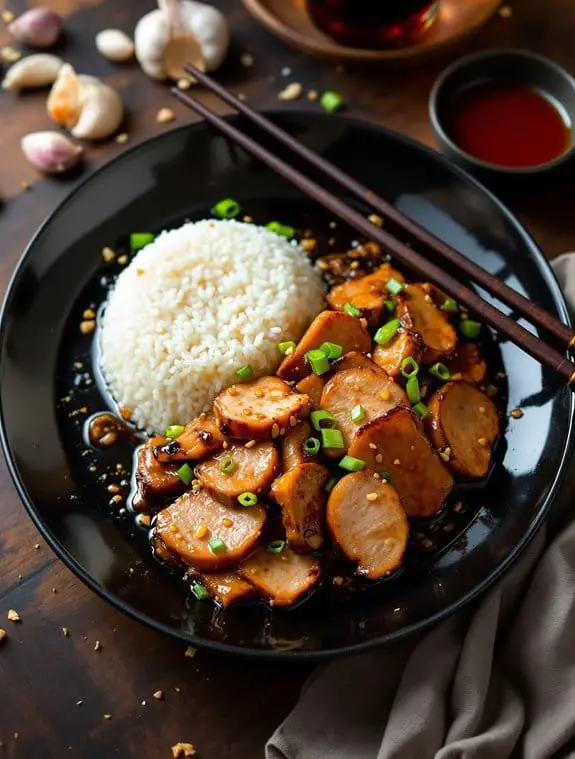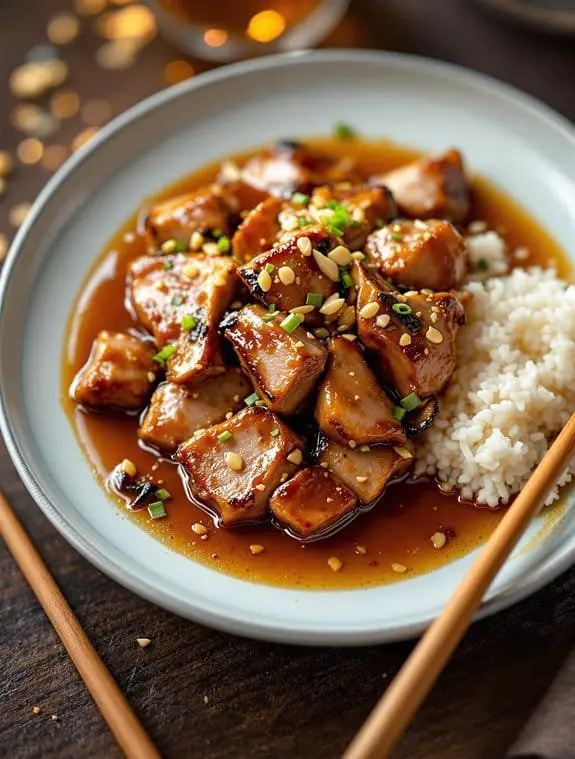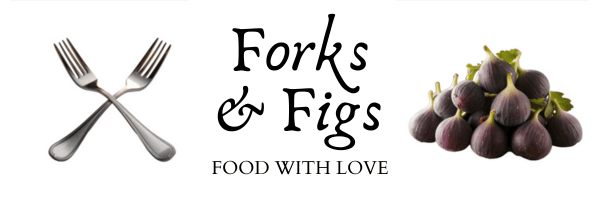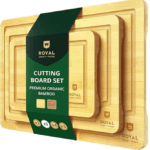Chinese Garlic Pork Recipe – Restaurant Style

I’m about to share something that’ll transform your weeknight dinner game—a Chinese garlic pork recipe that rivals your favorite takeout joint. You know that sticky, savory dish with tender pork swimming in an aromatic garlic sauce that somehow tastes infinitely better at restaurants? Well, I’ve cracked the code, and it turns out the secret isn’t some mystical technique or impossible-to-find ingredient that’ll send you hunting through three different Asian markets.
Why You’ll Love this Chinese Garlic Pork
Three reasons make this Chinese garlic pork an absolute weeknight winner, and I’m betting you’ll agree after your first bite.
First, it’s ridiculously fast. Twenty minutes from start to finish, including marinating time. Who needs takeout when you’re this efficient?
Second, the flavor balance is pure magic. Sweet, tangy, savory, with just enough heat from that doubanjiang to wake up your taste buds without setting your mouth on fire.
Third, it’s practically foolproof. Even if you’re convinced you can’t stir-fry without creating kitchen chaos, this recipe forgives mistakes and still delivers restaurant-quality results every single time.
What Ingredients are in Chinese Garlic Pork?
The beauty of Chinese garlic pork lies in its simplicity, which means you won’t need to hunt down exotic ingredients from specialty stores. Most of what you need is probably already hanging out in your pantry or can be found at your regular grocery store.
That said, there are a couple of star players that make this dish authentically delicious. The doubanjiang, or chili bean paste, is really what gives this recipe its soul, and the Shaoxing rice wine adds that subtle depth that separates homemade from takeout. Don’t worry though, I’ll walk you through where to find these gems.
Ingredients:
- 10 oz pork tenderloin, sliced thin
- 2 tsp light soy sauce (for marinade)
- 2 tsp Shaoxing rice wine
- 1 tbsp cornstarch (for marinade)
- 3 cloves garlic, minced
- 1-inch piece fresh ginger, minced
- 1 tbsp doubanjiang (chili bean paste)
- 2 tbsp rice vinegar
- 2 tbsp sugar
- 3 tbsp water
- 2 tbsp vegetable or peanut oil
- Optional vegetables: wood ear mushrooms, celtuce, carrots, bell peppers
Ingredient Notes and Substitutions
Pork tenderloin is my go-to here because it stays tender and cooks quickly, but pork shoulder or even chicken thighs work if that’s what you’ve got. The key is slicing whatever protein you choose really thin, like pencil-thin, so it cooks evenly in that blazing hot wok.
Now, about that doubanjiang. This fermented chili bean paste is worth tracking down because it brings this incredible umami-rich heat that’s completely different from regular hot sauce. Most Asian grocery stores carry it, and many regular supermarkets stock it in their international aisles now.
If you’re absolutely stuck, you can substitute with a mix of miso paste and chili garlic sauce, though it won’t be quite the same.
Shaoxing rice wine is another game-changer, adding this subtle sweetness and complexity. Dry sherry makes a decent substitute if you can’t find it, but please don’t use regular cooking wine from the grocery store, that stuff tastes like regret mixed with salt.
The vegetables are completely optional and totally flexible. Wood ear mushrooms add this fantastic chewy texture, but regular mushrooms work fine too. Celtuce might be hard to find, so feel free to swap in celery, snap peas, or whatever crisp vegetables make you happy.
How to Make this Chinese Garlic Pork

The secret to amazing Chinese garlic pork is all in the prep work and timing, because once you start cooking, things move fast. Like, really fast. We’re talking stir-fry speed here, which means having everything chopped, mixed, and ready to go before you even think about turning on that burner.
Start with the Marinade
First things first, let’s get that pork happy. Take your 10 oz of thinly sliced pork tenderloin and toss it with 2 tsp light soy sauce, 2 tsp Shaoxing rice wine, and 1 tbsp cornstarch.
Mix it all together with your hands, getting every piece coated, then let it sit for 20 minutes. This isn’t just busy work, the cornstarch creates this silky coating that keeps the meat tender, while the soy sauce and rice wine work their flavor magic.
Make Your Sauce
While the pork is marinating, whisk together 2 tbsp rice vinegar, 2 tbsp sugar, and 3 tbsp water in a small bowl.
You want that sugar completely dissolved, so give it a good stir. This sauce is what brings everything together at the end, creating that perfect balance of sweet and tangy that makes your taste buds do a little happy dance.
Heat Things Up
Here’s where things get exciting. Heat your wok or large skillet over high heat until it’s screaming hot, then add 2 tbsp vegetable or peanut oil.
The oil should shimmer and move around the pan like water. If your wok isn’t hot enough, the pork will stick and steam instead of getting that beautiful sear we’re after.
Build the Aromatics
Add your 3 minced garlic cloves, 1-inch piece of minced ginger, and 1 tbsp doubanjiang to the hot oil.
Stir-fry this aromatic trio for about 30 seconds until it smells absolutely incredible and the doubanjiang starts to release its oils.
Don’t let the garlic burn though, because burnt garlic tastes bitter and will ruin your whole day.
Cook the Pork
Now comes the pork. Add all those marinated pieces to the wok and spread them out in a single layer.
Let them sit for about 30 seconds to get a nice sear, then start stir-frying. The pork should turn opaque and cook through in about 2-3 minutes.
If you’re using any optional vegetables like wood ear mushrooms, carrots, or bell peppers, toss them in now and stir-fry for another minute or two.
Bring It All Together
Pour that sauce mixture right into the wok and watch the magic happen.
The liquid will bubble and start thickening almost immediately thanks to the cornstarch from the marinade.
Stir everything together, making sure every piece of pork gets coated in that glossy, gorgeous sauce.
This should only take about a minute, maybe less.
The whole cooking process from start to finish takes maybe 5 minutes, which is why having everything prepped beforehand is so vital.
Serve this immediately over steamed rice while it’s still sizzling hot, because Chinese garlic pork waits for no one.
Chinese Garlic Pork Substitutions and Variations
While Chinese garlic pork is pretty perfect as-is, life happens and sometimes you need to work with what’s actually sitting in your fridge right now.
No pork tenderloin? Chicken thighs work beautifully, or even beef sirloin if you’re feeling fancy.
Can’t find doubanjiang? Regular chili garlic sauce will do the trick, though you’ll miss that deep fermented flavor.
I love throwing in whatever vegetables need rescuing – snow peas, broccoli, or mushrooms all play nice with that sweet-tangy sauce.
No Shaoxing wine? Dry sherry works, or just skip it entirely.
The garlic’s really doing the heavy lifting here anyway.
What to Serve with Chinese Garlic Pork
Once you’ve got that glossy, garlicky pork sizzling in your wok, you’ll want something to soak up every drop of that sweet-tangy sauce.
Steamed jasmine rice is my go-to choice. Those fluffy grains grab onto the sauce like tiny flavor sponges, and honestly, what’s Chinese takeout without rice?
For vegetables, I love pairing this with simple steamed broccoli or bok choy. The mild bitterness cuts through all that rich sweetness perfectly.
Want to get fancy? Serve it over crispy chow mein noodles or alongside some quick-pickled cucumbers for extra crunch and tang.
Final Thoughts
Look, I’m not gonna sugarcoat it – this isn’t some fancy restaurant dish that’ll take you three hours and a culinary degree to pull off. It’s weeknight-friendly Chinese comfort food that happens to taste like you ordered takeout from that place down the street.
The beauty here? You control the garlic intensity, the sweetness, even whether you want vegetables or just pure pork bliss. I’m telling you, once you nail that sauce balance, you’ll be making this on repeat. Your kitchen will smell amazing, and honestly, isn’t that half the battle with good cooking?

Chinese Garlic Pork
Ingredients
For the Marinade:
- 10 oz pork tenderloin sliced into thin strips
- 2 tsp light soy sauce
- 2 tsp Shaoxing rice wine
- 1 tbsp cornstarch
For the Sauce:
- 2 tbsp rice vinegar
- 2 tbsp sugar
- 3 tbsp water
- 1 tsp light soy sauce
- 1 tsp cornstarch
For Stir-Frying:
- 2 tbsp vegetable or peanut oil
- 3 cloves garlic minced
- 1- inch piece fresh ginger minced
- 1 tbsp doubanjiang chili bean paste
Optional Vegetables:
- Wood ear mushrooms soaked and sliced
- Celtuce or celery julienned
- Carrots julienned
- Bell peppers julienned
Instructions
- Combine pork strips with soy sauce, rice wine, and cornstarch in a bowl. Marinate for 20 minutes at room temperature.
- Whisk together rice vinegar, sugar, water, soy sauce, and cornstarch in a small bowl to create the sauce. Set aside.
- Heat wok or large skillet over high heat until smoking. Add oil and swirl to coat.
- Add minced garlic, ginger, and doubanjiang to the hot oil. Stir-fry for 15-20 seconds until fragrant.
- Add marinated pork to the wok and stir-fry for 2-3 minutes until pork is opaque and nearly cooked through.
- If using vegetables, add them now and stir-fry for 1-2 minutes until crisp-tender.
- Give the sauce mixture a quick stir and pour into the wok. Cook for 1-2 minutes, stirring constantly, until sauce thickens and coats the pork.
- Remove from heat and serve immediately over steamed rice.
Notes
Nutrition
Frequently Asked Questions
Can I Make This Dish Ahead of Time and Reheat It?
I don’t recommend making this ahead since the pork will overcook when reheated and become tough. The sauce also thickens too much. I’d prep ingredients beforehand and cook fresh instead.
How Long Does Leftover Chinese Garlic Pork Stay Fresh in the Refrigerator?
I’d store leftover garlic pork in the refrigerator for up to three days maximum. I recommend keeping it in an airtight container and reheating thoroughly before serving to maintain food safety.
What’s the Difference Between Doubanjiang and Regular Chili Paste?
Doubanjiang’s a fermented soybean and chili paste that’s salty, funky, and complex. Regular chili paste is typically just chilies and salt, offering heat without doubanjiang’s deep umami flavor that’s essential in Sichuan cooking.
Can I Freeze the Marinated Pork for Meal Prep?
Yes, I’d recommend freezing the marinated pork for up to three months. It’ll actually enhance the flavors as the meat marinates longer. Just thaw it overnight in your refrigerator before cooking.
Why Does My Sauce Separate and How Do I Fix It?
Your sauce separates when the cornstarch isn’t properly mixed or the heat’s too low. I’ll fix it by whisking the cornstarch mixture again before adding, then cooking on high heat while stirring constantly.





